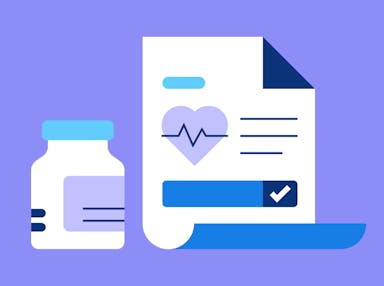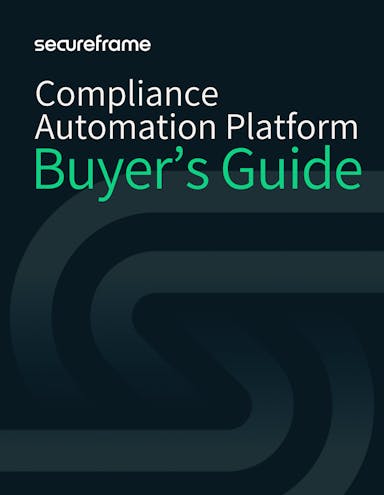
Ransomware Attacks: Definition, 10 Famous Examples & Tips to Prevent Them
Anna Fitzgerald
Senior Content Marketing Manager
Rob Gutierrez
Senior Cybersecurity and Compliance Manager, CISA, CCSK, CMMC RP
As many as 90% of organizations have been hit by ransomware, and three quarters hit more than once over the past 12 months, according to a US and UK study by SpyCloud.
Ransomware attacks have become pervasive across industries in recent years. These attacks not only disrupt operations— they can also lead to significant financial and reputational damage.
Understanding how ransomware works and what steps to take to prevent and recover from such an attack can help your organization better prepare and protect itself. Let’s start with a definition.
What is a ransomware attack?
A ransomware attack is a type of cyberattack in which malicious software encrypts a victim’s files or locks their system, rendering data or devices inaccessible. The attackers then demand a ransom, typically in cryptocurrency, in exchange for a decryption key or other way of restoring access to their data or system.
These attacks often exploit vulnerabilities in software, email systems, or human error to gain unauthorized access. Once they gain access, attackers not only encrypt files — they also steal as much data as possible and threaten to publish it if a ransom isn’t paid. In order to isolate these intruders, the organization typically shuts down part or all of its network, which can disrupt or halt their entire operations. In order to restore their operations, the organization has to decide whether to pay the ransom and hope that the attackers keep their word about decrypting and restoring access to their data or systems, or not pay the ransom and try to recover their data and systems themselves or rebuild if ransomware takes hold.
Despite law enforcement advocating against paying ransoms and allowing cyber criminals to profit from cyberattacks, there was a significant year-on-year increase in the number of organizations paying a ransom, according to SpyCloud’s 2024 Malware and Ransomware
Defense Report. In 2024, 62% of organizations paid a ransom compared to 48% in 2023. However, of those organizations that did pay a ransom, only a third fully recovered their data.
Ransom payments and data loss are just two parts of the potential fallout of a ransomware attack. Let’s take a closer look below to better understand what a ransomware attack is and why prevention is important.
Recommended reading

190 Cybersecurity Statistics to Inspire Action This Year
Ransomware attack fallout
The ramifications of a ransomware attack can be severe. These are listed below with real-world examples.
- Operational disruptions: Businesses and critical services may come to a halt. For example, a ransomware attack on CDK Global disrupted the operations of thousands of automotive dealerships for days in 2024, forcing them to revert to pen and paper. A ransomware attack also forced the ninth-largest US city, Los Angeles, to close court hearings and other services for weeks.
- Data breaches: Sensitive data may be exposed or stolen whether or not the ransom is paid. This year, personal data belonging to as many as one-third of American consumers, including identity and health information, may have been stolen in a ransomware attack on a UnitedHealth Group subsidiary.
- Financial losses: Costs include ransom payments, system recovery, and lost deals and revenue. One of the worst cyber attacks of 2023 caused $100 million in financial losses to the major hotel and casino chain MGM Resorts.
- Failed compliance audits and fines: In addition to isolating the incident and recovering data, responding to a ransomware attack involves complying with regulatory requirements, such as timely notification to authorities, affected clients, and possibly the public. Failure to do so may result in failing compliance audits and/or fines for non-compliance. For example, the HHS’ Office for Civil Rights is investigating Change Healthcare’s response to a February 2024 ransomware attack to determine if the HIPAA Rules have been violated, in part due to its delay in issuing notification letters to the individuals who had their data stolen.
- Lawsuits: Organizations may incur additional financial losses if customers decide to sue them over data breach resulting from a ransomware attack. The online pharmacy Postmeds Inc., which does business as Truepill, for example, agreed to settle a class action lawsuit filed in response to a 2023 ransomware attack that affected 2.3 million individuals for $7.5 million.
- Reputational damage: Customers and stakeholders may lose trust in the organization, which can lead to a loss in investment and funding, among other consequences. For example, after suffering a major ransomware attack in June 2023, KNP Logistics declared itself insolvent in September due in part to the attack adversely impacting their ability to secure additional investment and funding.
- Business shutdown: In the worst cases, an organization may be forced to shutdown if they can’t restore their operations or pay the ransom. For example, ransomware attacks caused widespread outages across the healthcare ecosystem. In 2023, St. Margaret's Health in Spring Valley, Illinois became the first hospital to shut down permanently in part because of costs associated with a ransomware attack.
Let’s take a closer look at these and other real-world examples to better understand the impact of ransomware attacks on various sectors.
Recommended reading

15 Recent Cyber Attacks & What They Tell Us About the Future of Cybersecurity
10 famous ransomware attack examples
Below we’ll look at several examples, including some of the most famous, largest, and recent ransomware attacks.
1. ICBC Bank ransomware attack
The Industrial and Commercial Bank of China (ICBC), one of the largest banks globally, fell victim to a ransomware attack targeting critical financial systems in November 2023. The attack had far-reaching implications, including disrupting the US Treasury market. Its potential impact on millions of customers emphasized the need for robust cybersecurity measures in the financial sector.
While specific details about the attack, such as the ransom demanded or the amount of data compromised, remain confidential, the incident highlighted that even highly secured financial institutions are not immune to cyber threats. Additionally, because of its scale, the incident demonstrated the high stakes of cybersecurity in global finance.
2. WannaCry ransomware attack
In May 2017, the WannaCry ransomware attack spread rapidly, affecting over 200,000 systems across 150 countries in just a few days. The ransomware exploited a Windows vulnerability known as EternalBlue, which was developed by the US National Security Agency (NSA) and leaked by the hacking group Shadow Brokers. One of the most notable victims was the UK’s National Health Service (NHS), where the attack disrupted hospital operations, rerouted ambulances, and canceled thousands of medical appointments.
The total financial impact of WannaCry was estimated to exceed $4 billion globally, including recovery costs and lost productivity. This attack served as a stark reminder of the global consequences of unpatched systems and the importance of timely updates.
3. Patelco ransomware attack
This summer, Patelco Credit Union suffered a ransomware attack that shut down most of the not-for-profit credit union’s online and mobile banking systems. It took Patelco two weeks to restore them. While Patelco’s response included restoring operations and reassuring members about the safety of their information, the credit union later informed authorities that data on more than 1 million individuals was stolen in the ransomware attack.
During the next quarter, Patelco Credit Union lost $39.2 million, most of which was due to a $38 million special charge related to the summer's ransomware attack and online outage. The net loss at the San Francisco Bay-area credit union included $9.5 billion in assets and over 500,000 members.
This incident not only raised concerns about the resilience of credit unions against cyber threats — it highlighted the critical need for financial institutions of all sizes to implement robust incident response plans and invest in cybersecurity measures to safeguard sensitive data.
4. Heritage Valley Health System ransomware attack
In 2017, Heritage Valley Health System was affected by a global ransomware attack. It paralyzed the Pennsylvania-based healthcare provider’s computer systems, impacting patient care and hospital operations across the entire health system including satellite and community locations. The attack delayed medical procedures and forced staff to rely on manual processes for scheduling and documentation. They also had to pay almost $1 million to settle alleged HIPAA Security rule violations related to the ransomware wattack with the HHS’s Office for Civil Rights..
Though the organization did not pay the ransom, recovery costs and operational disruptions underscored the vulnerability of the healthcare sector. This attack demonstrated the critical role cybersecurity plays in ensuring the continuity of patient care and highlighted the need for enhanced protections against cyber threats targeting healthcare providers.
5. Fulton County ransomware attack
Fulton County, Georgia, fell victim to a ransomware attack in January 2024, disrupting various public services, including its voter registration system, telephone systems, online water billing payments, Google Image Search mapping functionality, and more. Fulton County’s recovery efforts included restoring systems and bolstering defenses to prevent future incidents.
Since the attack delayed critical services for residents, it underscored the risks ransomware poses to public infrastructure. The incident also highlighted the cybersecurity challenges faced by local governments, which often operate with limited resources and outdated systems, and the importance of investing in cybersecurity to prevent similar incidents.
6. Colonial Pipeline ransomware attack
One of the most high-profile ransomware attacks of the past decade was on the Colonial Pipeline. In May 2021, this attack disrupted the largest fuel pipeline in the United States, causing widespread panic and fuel shortages along the eastern seaboard. The attack, attributed to the DarkSide ransomware group, ultimately forced the company to shut down operations for several days and pay a $4.4 million ransom to recover some of its data.
Beyond the financial impact, the attack highlighted vulnerabilities in critical infrastructure and the potential for ransomware to disrupt national security and economic stability. This spurred federal initiatives to strengthen cybersecurity regulations for essential services.
7. CDK ransomware attack
CDK Global, a major provider of IT solutions for automotive dealerships, was hit by a ransomware attack that disrupted operations for dealerships across the US. The attack affected nearly every aspect of the dealerships’ operations, including facilitating sales, repairs, registration, inventory, and more, which in turn disrupted operations for some of the largest automotive retailers in the country. It appeared that CDK Global paid a $25 million ransom to the hackers, which would be the second-largest ransom payment on record,
While the financial losses remain unconfirmed, the incident emphasized the importance of securing supply chain ecosystems to protect against cyberattacks that can have a ripple effect on customers across thousands of locations.
8. Ascension Health ransomware attack
Ascension Health, one of the largest healthcare systems in the US, experienced a ransomware attack that disrupted operations and raised concerns about patient care and data security after an employee downloaded a malicious file onto a company device. With thousands of providers relying on its systems and patients relying on its services, the attack had far-reaching implications for healthcare continuity across 140 hospitals in at least 10 states. Delayed or lost lab results, medication errors, and an absence of routine safety checks are just a few examples of the immediate fallout of the weeks-long disruption caused by the ransomware attack. Later, Ascension notified nearly 5.6 million patients and employees that their personal and health data was stolen during the attack.
The breach highlighted the persistent vulnerabilities in healthcare IT systems, which makes healthcare providers particularly vulnerable to ransomware attacks. As these attacks targeting healthcare providers continue to escalate in frequency and impact, with 2023 standing out as a record-breaking year, there is a critical need for cybersecurity in healthcare.
9. Mr. Cooper ransomware attack
In 2023, Mr. Cooper, a leading mortgage services company, fell victim to a ransomware attack that temporarily disrupted customer service operations and raised concerns about the security of personal financial data. While the company worked swiftly to restore systems, the incident impacted 14.7 million current and former customers and is expected to cost the Texas-based mortgage company $25 million in response and recovery expenses.
This attack underscored the risks financial service providers face from sophisticated cybercriminals and the need for robust data protection measures and proactive communication with customers during recovery efforts to maintain trust.
10. Change Healthcare ransomware attack
Change Healthcare, a prominent provider of healthcare technology solutions, faced a ransomware attack that exposed vulnerabilities in its systems and disrupted its operations, which led to sudden and widespread outages across the healthcare sector. Change Healthcare later confirmed that hackers stole the personal and health data of millions of Americans. As one of the largest processors of US health data, the attack on the health tech company likely stands as one of the largest data breaches of US health and medical data in history, with at least 100 million people known to be impacted.
Raising alarms about the potential for cyberattacks to compromise sensitive health data and impede innovation in healthcare technology, the breach underscored the critical need for cybersecurity investments in the sector, particularly for organizations managing large volumes of patient and operational data.
Recommended reading

What is HIPAA Compliance and Why is it Important?
How to prevent ransomware attacks
Preventing ransomware attacks requires a proactive, multi-layered approach. Some key best practices include:
- Regular updates: Keeping software and systems updated is critical because attackers often exploit vulnerabilities in outdated software. Your organization must ensure systems and software are updated with the latest security patches. Automating updates wherever possible can help reduce human error and minimize the time systems are exposed to known vulnerabilities.
- Employee training: Employees are often the first line of defense against ransomware attacks. Conduct regular training sessions to help them recognize phishing and other attack vendors. Attack simulated training, in which employees are presented with realistic phishing emails or other cyber threats, can help reinforce good practices and awareness.
- Regular backups: Regularly backing up data can enable your organization to recover from a ransomware attack without paying a ransom. It’s important to store backups offline or in secure cloud storage to prevent them from being targeted during an attack, and periodically test backup systems to confirm data integrity and restoration capabilities.
- Endpoint protection: Advanced endpoint protection tools can detect and block ransomware before it causes damage. Look for solutions that include behavior-based detection, which identifies suspicious activities like unauthorized file encryption. Keep endpoint security solutions updated to counter the latest threats.
- Access control: Restricting access reduces the potential damage if an account is compromised. Implement the principle of least privilege, ensuring users only have access to the resources necessary for their roles. Multi-factor authentication adds an extra layer of security, even if credentials are stolen.
- Vulnerability management: Having a proactive vulnerability management process is essential for preventing ransomware attacks. Regular penetration testing and security assessments simulate the tactics and techniques of real-world attackers, uncovering weaknesses in infrastructure, applications, and human factors that attackers could exploit. This enables your organization to identify and remediate vulnerabilities before they can be exploited and to test and improve your response capabilities.
- Third-party risk management: Ransomware attacks on third parties can significantly impact your business, from disrupting your services to exposing your data. That’s why it’s so important to implement a robust third-party risk management framework that incorporates due diligence, continuous monitoring, and vendor management policies. This helps ensure your third parties are adhering to strict cybersecurity standards.
- Cybersecurity compliance: Cybersecurity frameworks require organizations to implement robust security measures, including many of the security measures above. By adhering to these standards, organizations establish a baseline of technical and administrative safeguards against common threats, which bolsters defenses and mitigates the likelihood and impact of cyber attacks.

Recommended reading

10 Common Cybersecurity Frameworks: Choosing the Right One for Your Clients
How to recover from ransomware attacks
While you can take steps to mitigate the risk of ransomware attacks, you can’t eliminate it altogether. If your organization becomes a victim, you can follow the steps below to kick off your recovery efforts.
1. Isolate infected systems to prevent the spread of malware.
Immediately disconnect infected devices from the network to contain the spread. Disable shared drives and network connections that could be exploited by ransomware to propagate further. Ensure all affected devices remain offline until they are fully assessed and cleaned.
2. Engage incident response teams to assess and contain the breach.
Professional incident response teams have the expertise to investigate the attack's scope, identify the ransomware variant, and develop a containment and recovery plan. If internal teams lack experience, consider using AI and automation or bringing in external cybersecurity experts to manage the response effectively.
3. Use security AI and automation to improve response capabilities.
AI and automation are powerful tools for mitigating the consequences of a ransomware attack, helping teams detect and contain an attack faster and reduce costs as a result. IBM research shows organizations that use security AI and automation extensively were able to identify and contain a data breach nearly 100 days faster and saw cost savings of nearly $1.8 million compared to organizations that do not use AI and automation for security at all.
4. Notify authorities and comply with legal and regulatory requirements.
Reporting ransomware attacks to authorities can aid in tracking cybercriminals and preventing future incidents. Organizations in regulated industries must also adhere to compliance obligations, such as notifying affected parties or regulatory bodies within specified timeframes.
5. Restore systems using clean backups.
Before restoring from backups, ensure that all ransomware has been removed from affected systems. Verify the integrity of backup files and prioritize restoring critical systems first. Consider implementing segmented restoration to reduce downtime and ensure operational continuity.
6. Analyze and improve security measures to prevent recurrence.
Conduct a thorough post-incident review to understand how the attack occurred and identify security gaps. Use these insights to strengthen defenses, such as enhancing monitoring tools, updating security policies, and retraining employees. This step is crucial to building resilience against future threats.
Recommended reading

How to Build a Resilient Cyber Incident Response Plan: Challenges & Best Practices
How Secureframe can help prevent and mitigate ransomware attacks
Secureframe provides security AI and automation tools to enhance your organization’s cybersecurity posture. With Secureframe, you can:
- Simplify adherence to over 40 security frameworks, including SOC 2, ISO 27001, NIST 800-53, CMMC, and more.
- Manage incident response reporting and documentation controls and tests in case of ransomware attack.
- Integrate your cloud platform and developer tools to see all of your vulnerabilities from services like AWS inspector and Github in one place.
- Consolidate all compliance and risk data in one source of truth via 220+ native integrations and the Secureframe API.
- Automate cloud remediation, risk assessments, policy management, and security questionnaires with AI.
- Closely monitor and manage your third-party vendor relationships.
- Conduct continuous monitoring to look for gaps in controls to maintain continuous compliance
- Automate the assigning, tracking, and reporting of required security and privacy compliance training.
- Get personalized advice based on your company’s unique risks and industry requirements from our in-house compliance team.
To learn more about how Secureframe can help you enhance your security and compliance posture and defend against ransomware and other common cyber threats, request a demo today.

Compliance Automation Platform Buyer’s Guide
Learn how a compliance automation platform can help streamline and scale your security and compliance efforts, then use an evaluation form to fast-track the vendor evaluation process.
FAQs
Why is healthcare data frequently the target of ransomware attacks?
Since healthcare data is highly sensitive and valuable, attackers target it knowing healthcare organizations may be more likely to pay a ransom quickly to protect patient privacy.
How does a ransomware attack work?
During a ransomware attack, attackers typically infiltrate systems through phishing emails, malicious downloads, or exploiting software vulnerabilities. Once inside, they inject malware to encrypt files and lock systems and demand payment in order to decrypt the files and restore access to your data and systems.
How many ransomware attacks in 2023?
While the exact number varies by source, ransomware attacks surged in 2023 according to the Office of the Director of National Intelligence, with 4,506 incidents claimed by malicious actors.
How do ransomware attacks happen?
Ransomware attacks often occur due to poor cybersecurity hygiene, such as outdated software, weak passwords, or untrained employees falling victim to phishing schemes.
What is the purpose of ransomware attacks?
The primary goal is financial gain. Attackers demand payment to unlock encrypted systems or prevent the public release of stolen data.

Anna Fitzgerald
Senior Content Marketing Manager
Anna Fitzgerald is a digital and product marketing professional with nearly a decade of experience delivering high-quality content across highly regulated and technical industries, including healthcare, web development, and cybersecurity compliance. At Secureframe, she specializes in translating complex regulatory frameworks—such as CMMC, FedRAMP, NIST, and SOC 2—into practical resources that help organizations of all sizes and maturity levels meet evolving compliance requirements and improve their overall risk management strategy.

Rob Gutierrez
Senior Cybersecurity and Compliance Manager, CISA, CCSK, CMMC RP
Rob Gutierrez is an information security leader with nearly a decade of experience in GRC, IT audit, cybersecurity, FedRAMP, cloud, and supply chain assessments. As a former auditor and security consultant, Rob performed and managed CMMC, FedRAMP, FISMA, and other security and regulatory audits. At Secureframe, he’s helped hundreds of customers achieve compliance with federal and commercial frameworks, including NIST 800-171, NIST 800-53, FedRAMP, CMMC, SOC 2, and ISO 27001.